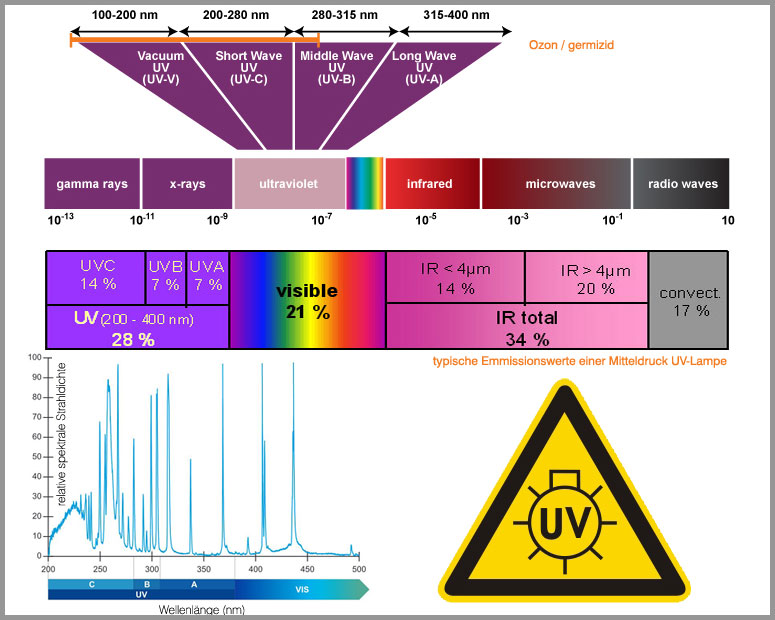(High Voltage Focus, NLQ1/16) We all have observed it before – the mysterious black light. It can be spotted in nightlife sceneries as well as in haunted houses or at realistic or fictional crime scenes – as the remains of removed bloodstains or counterfeit money are forensically investigated…
The corresponding technical term for this light spectacle is far less mysterious: UV-A, a quite banal definition. UV stands for “ultraviolet” and A simply for the first category in an alphabetical sequence. For the human eye generally invisible, UV radiation of category A can be perceived at least by fluorescence - the rest remains in the dark.
Ultraviolet radiation is an electromagnetic radiation, whose wavelength is shorter than that of visible light but longer than of X-ray radiation. In Germany it is defined in DIN 5031-7 with a range between 380-10 nm of wavelength. In certain wavebands UV radiation can be ionizing. That describes any radiation whose kinetic energy (with particles) or quantum energy (with waves) is sufficient to extract electrons from an atom or molecule and applies to wavelengths of less than 200 nm in the electromagnetic spectrum. Therefore only cosmic rays, gamma rays, X-rays and short-wave ultraviolet radiation have enough quantum energy to separate atomic bonds.
Depending on the wavelength UV-applications can therefore be fairly simple or extremely complex ranging from domestic insect traps to EUV-lithography in microchip production or from neon tubes in garages to protein analysis.
UV technology is a classic application for high voltage where it is applied as ignition-, operating- or as accelerating-voltage. Just as in conventional lighting technology there is a trend towards LED in UV applications using the upper wavelength range. For short-wave applications - particularly the ionizing wavelengths - however, the light emitting diode encounters physical limits keeping UV an interesting field of activity for GES.


